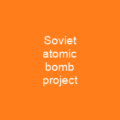The Bomb: A Deadly Weapon Through History
Imagine a weapon that can unleash such force and destruction, it’s almost like a giant hand reaching out to tear apart the very fabric of life. That’s what a bomb is—a terrifying yet fascinating subject in the annals of human history. Have you ever wondered how something so simple could become so deadly?
The Origins and Evolution of Bombs
Bombs have been around for centuries, with their roots tracing back to ancient times. The term ‘bomb’ itself comes from the Latin word “bombus”, meaning ‘booming’ or ‘buzzing.’ It’s hard to believe that something as destructive as a bomb could have such an innocent-sounding name! In 1000 AD, a soldier demonstrated gunpowder pots and caltrops. By the 13th century, bombs with metal casings were being used in East Asia, causing significant damage to Chinese Song cities.
From Thunder Crash Bombs to Atomic Weapons
The term ‘thunder crash bomb’ was coined during a Jin dynasty naval battle in 1231. Can you imagine the shock and awe that must have been felt when these bombs exploded, sending out thunderous booms? Fast forward to modern times, and we see the development of atomic bombs and thermonuclear weapons. These are not just bombs; they’re like titanic forces unleashed upon the world.
The Destructive Power of Bombs
Bombs can cause a myriad of effects on living things, including overpressure (shock), fragmentation, impact, and heat. The energy released by a nuclear fission bomb may be tens of thousands of times greater than a chemical bomb of the same mass. Can you even begin to comprehend such power?
Different Types of Bombs
Bombs come in various types, each with its own unique characteristics and uses. For instance, aerial bombs are designed to be dropped from military aircraft, while delay-action bombs explode some time after impact. Some bombs are harmless, like dummy bombs that have been fully disabled or had their explosive contents removed.
The History of Bombing
During World War II, bombing became a major military feature. The first air-dropped bombs were used by the Austrians in 1849 during the siege of Venice. Fast forward to modern times, and we see precision-guided munitions that can be guided after they leave an aircraft by remote control or autonomous guidance.
Modern Bomb Delivery Methods
Aircraft may also deliver bombs in the form of warheads on guided missiles, such as long-range cruise missiles. The Blue Peacock nuclear mines were planned to be positioned during wartime and would explode within 10 seconds if disturbed.
The Science Behind Bombs
Bombs work through a combination of chemical reactions and physical forces. Compressed gas devices can cause property damage, injury, or death without being classified as bombs. Low explosives like black powder produce hot gas when ignited but have low pressure waves. High explosive bombs use detonation to rapidly convert energy molecules into a low-energy state.
Advanced Bomb Types
Thermobaric bombs generate high-temperature explosions using oxygen from surrounding air, while nuclear fission type atomic bombs release energy by consolidating fissile material and exposing it to neutrons. Thermonuclear weapons (hydrogen bombs) create fusion explosions using energy from initial fission explosion.
Forensic Science and Bomb Craters
In forensic science, the point of detonation is referred to as the blast seat or epicenter. The effects can result in an explosion crater, providing crucial evidence for investigators. Understanding these craters helps in determining the nature and extent of a bombing incident.
Conclusion
The bomb has evolved from simple gunpowder devices to complex nuclear weapons, each with its own unique destructive power. From ancient times to modern warfare, bombs have left an indelible mark on history. As we continue to grapple with the realities of these deadly weapons, it’s crucial to understand their science and impact.

You want to know more about Bomb?
This page is based on the article Bomb published in Wikipedia (retrieved on March 5, 2025) and was automatically summarized using artificial intelligence.






